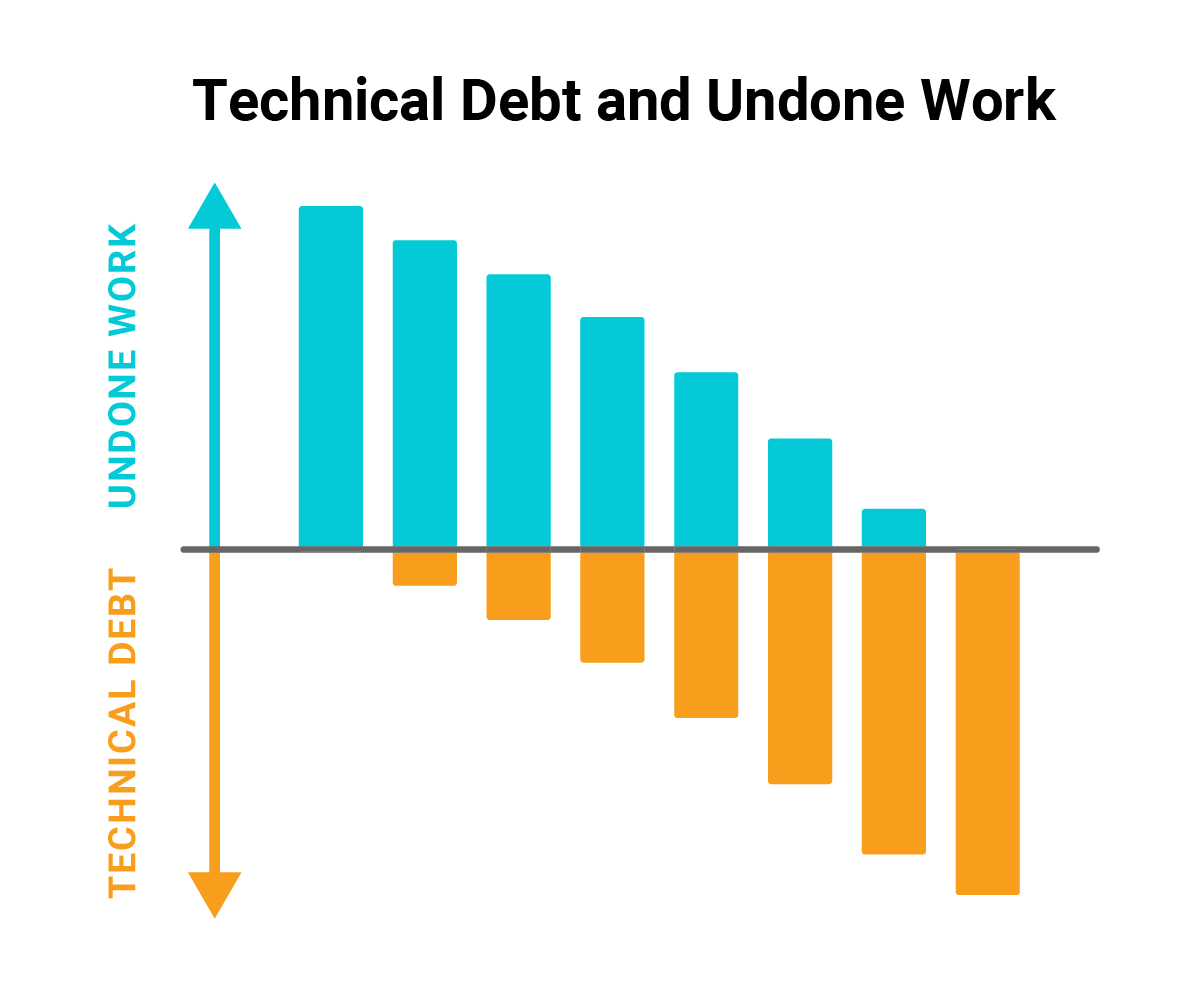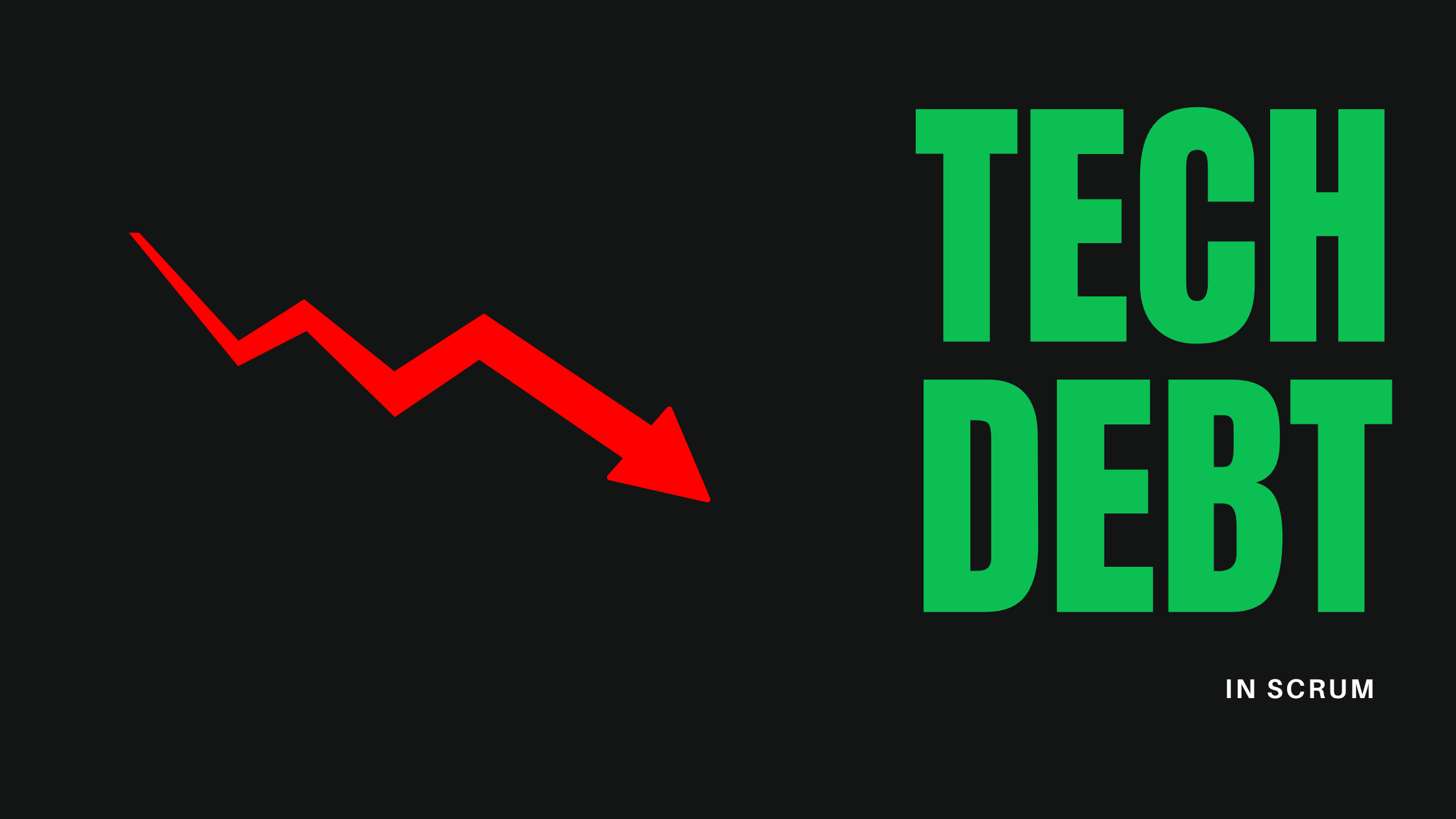Handle Technical Debt in Scrum [2024]: Managing Code Quality in Agile Development
In the fast-paced world of agile software development, technical debt is an ever-present challenge that teams must navigate. As we move into 2024, understanding how to handle technical debt in Scrum has become more crucial than ever. This comprehensive guide will explore the concept of technical debt, its impact on Scrum projects, and best practices for managing it effectively.
What is Technical Debt?
Technical debt, often referred to as tech debt or code debt, is a metaphor in software development that reflects the implied cost of additional rework caused by choosing an easy solution now instead of using a better approach that would take longer. Just like financial debt, technical debt accumulates interest over time, making it harder and more time-consuming to implement changes in the future.
For a deeper dive into the concept and strategies to eliminate technical debt, check out our article on How to Eliminate Technical Debt.
Understanding Technical Debt in Scrum
Scrum, an agile framework for complex product development, emphasizes iterative progress and flexibility. However, this focus on rapid delivery can sometimes lead to the accumulation of technical debt. In a Scrum project, technical debt can manifest in various forms:
- Code Debt: Poorly written or duplicated code that’s difficult to maintain.
- Design Debt: Flaws in the software architecture that limit scalability or flexibility.
- Test Debt: Inadequate testing that leads to undiscovered bugs or fragile code.
- Documentation Debt: Lack of proper documentation, making it hard for new team members to understand the system.
The Impact of Technical Debt on Scrum Teams
Technical debt can significantly impact a Scrum team’s productivity and the overall quality of the product:
- Reduced Velocity: As debt accumulates, the team spends more time dealing with existing issues, slowing down the development of new features.
- Increased Bugs: Poorly written or untested code is more likely to contain bugs, leading to more time spent on fixes.
- Decreased Morale: Developers may become frustrated working with suboptimal code, affecting team morale.
- Hindered Innovation: Technical debt can make it difficult to implement new features or adopt new technologies.
Managing Technical Debt in Scrum
Effectively managing debt is crucial for maintaining a healthy and productive Scrum environment. Here are some strategies to handle technical debt in Scrum:
1. Incorporate Technical Debt into the Product Backlog
The product owner should work with the development team to include technical debt items in the product backlog. This ensures that addressing technical debt is part of the regular development cycle.
2. Make Technical Debt Visible
Use tools and practices to make technical debt visible to all stakeholders. This could include:
- Creating a technical debt register
- Using code quality metrics
- Visualizing technical debt on the team’s Scrum board
3. Address Technical Debt Regularly
Allocate time in each sprint to address technical debt. This could be a fixed percentage of each sprint or dedicated sprints for tackling accumulated debt.
4. Include Technical Debt in the Definition of Done
Incorporate quality standards that prevent the introduction of new technical debt into your Definition of Done. This helps ensure that new work doesn’t contribute to existing debt.
5. Educate Stakeholders
Help stakeholders understand the importance of managing technical debt. This can make it easier to get buy-in for allocating resources to address it.
The Role of the Scrum Team in Managing Technical Debt
Each member of the Scrum team plays a crucial role in managing technical debt:
Product Owner
The product owner is responsible for managing the product backlog and ensuring that technical debt items are appropriately prioritized. They should:
- Work with the development team to understand the impact of technical debt
- Balance the need for new features with addressing existing debt
- Communicate the importance of technical debt management to stakeholders
Scrum Master
The Scrum Master facilitates the Scrum process and helps the team manage technical debt by:
- Ensuring technical debt is discussed during sprint planning and retrospectives
- Helping the team visualize and track technical debt
- Facilitating conversations between the development team and product owner about technical debt
Development Team
The development team is on the front lines of dealing with technical debt. They should:
- Identify and communicate about technical debt
- Propose solutions for addressing debt
- Incorporate debt reduction into their daily work

Best Practices for Handling Technical Debt in Scrum
- Prioritize Wisely: Not all technical debt is created equal. Focus on addressing debt that has the biggest impact on your team’s productivity and the product’s quality.
- Refactor Regularly: Encourage continuous refactoring as part of the team’s regular work. This helps prevent the accumulation of debt.
- Automate Testing: Comprehensive automated tests can help catch issues early and make it easier to refactor with confidence.
- Improve Documentation: Good documentation can help reduce the “knowledge debt” that often accompanies technical debt.
- Use Technical Debt Sprints: Consider dedicating entire sprints to addressing technical debt periodically.
- Monitor and Measure: Use tools to monitor code quality and track the team’s progress in reducing technical debt over time.
- Foster a Quality-First Culture: Encourage the team to prioritize code quality and empower them to speak up about technical debt issues.
Challenges in Managing Technical Debt in Scrum
While Scrum provides a framework for managing technical debt, teams may still face challenges:
- Balancing New Features and Debt: It can be difficult to convince stakeholders to allocate time for addressing technical debt instead of developing new features.
- Hidden Debt: Some forms of technical debt may not be immediately visible, making them hard to track and address.
- Varying Perspectives: Different team members may have different views on what constitutes technical debt and how to prioritize it.
- Time Pressure: The pressure to deliver quickly in Scrum can sometimes lead to shortcuts that create more technical debt.
The Future of Technical Debt Management in Scrum
As we move further into 2024 and beyond, several trends are shaping how Scrum teams manage technical debt:
- AI-Assisted Debt Detection: Advanced tools using AI are emerging to help identify and prioritize technical debt automatically.
- Shift-Left Approach: There’s a growing emphasis on preventing technical debt by incorporating quality practices earlier in the development process.
- Technical Debt as a Key Metric: More organizations are including technical debt reduction as a key performance indicator for development teams.
- Continuous Refactoring: The line between “regular work” and “addressing technical debt” is blurring, with more teams adopting a continuous refactoring approach.
For more insights on maintaining software quality, check out our article on Quality Assurance vs Quality Control.
Conclusion: Embracing Technical Debt Management in Scrum
Managing technical debt is an ongoing process that requires commitment from the entire Scrum team. By acknowledging the existence of technical debt, making it visible, and addressing it regularly, teams can maintain a healthy codebase that supports rapid, sustainable development.
Remember, the goal isn’t to eliminate all technical debt – some level of debt is often necessary for rapid development. Instead, the focus should be on managing debt effectively, ensuring it doesn’t hinder the team’s ability to deliver value.
As you work to improve your technical debt management practices, consider how these strategies can be applied to other areas of your development process. For example, if you’re exploring micro-SaaS development, many of these principles can help ensure you’re building a sustainable, high-quality product. For more on this topic, check out our article on Top 8 Ideas for Micro-SaaS in 2024.
By adopting these practices and staying informed about emerging trends, your Scrum team can effectively manage technical debt, maintaining a balance between rapid development and long-term sustainability. Remember, a well-managed codebase is the foundation of a successful, agile software development process.
For more information on Scrum and its practices, visit the official Scrum.org website.












